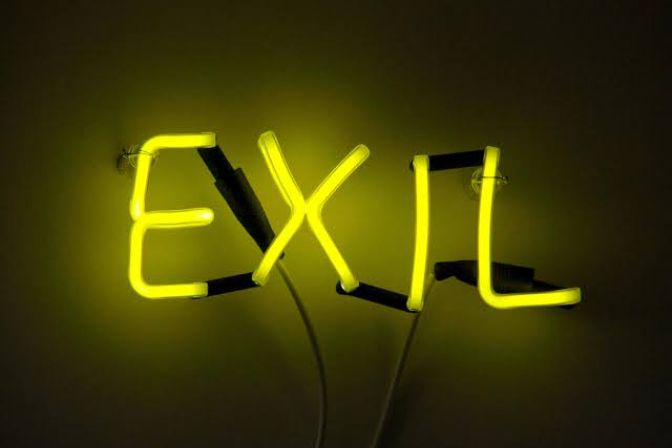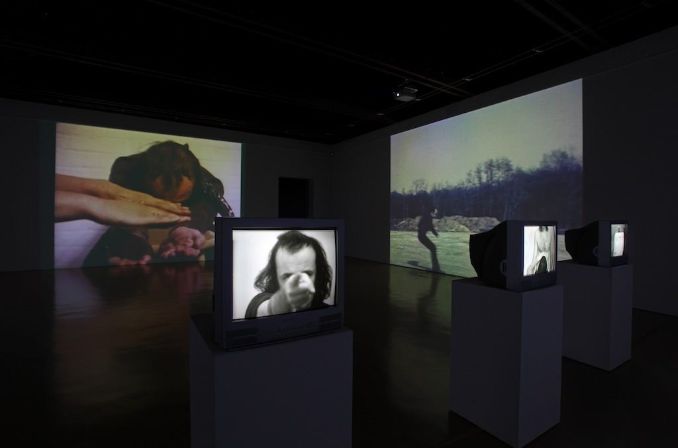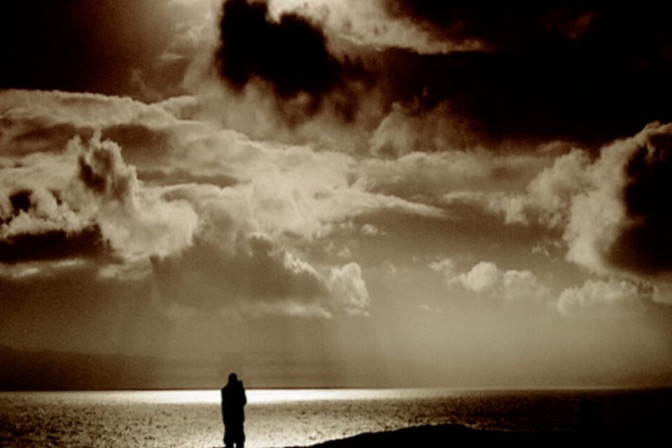Douglas Gordon (b.1966, in Glasgow, Scotland) is an internationally acclaimed contemporary artist known for his conceptual and often provocative explorations of identity, memory, time, and the instability of meaning. Working across a diverse range of media including video, film, installation, photography, text, drawing, and performance, Gordon’s art interrogates the dualities of good and evil, pleasure and pain, the sacred and the profane—often inviting viewers into a psychological and temporal dislocation that challenges perception and emotional response.
Raised in a working-class family in Glasgow, Gordon studied at the Glasgow School of Art from 1984 to 1988 and continued his postgraduate studies at the Slade School of Fine Art in London. He emerged in the early 1990s as part of the generation of British artists often grouped under the “Young British Artists” (YBAs) umbrella, though Gordon’s practice has consistently defied categorization. His early work established a deep interest in memory, doubling, and appropriation, which would become foundational to his later career.
One of his earliest and most influential works, 24 Hour Psycho (1993), is emblematic of his approach. In this piece, Gordon took Alfred Hitchcock’s iconic 1960 thriller Psycho and slowed it down to a full 24-hour duration. By deconstructing a familiar film, he removed its original pacing and suspense, forcing viewers to confront the material in an entirely new way. The work became a landmark of time-based media art, offering a meditation on cinematic memory, attention, and the structure of narrative.
Gordon’s fascination with duality and contradiction permeates his oeuvre. He frequently uses mirroring, repetition, inversion, and slowed or looped time to create eerie or uncanny effects. In works like Between Darkness and Light (After William Blake) (1997), Gordon projects two films—The Song of Bernadette and The Exorcist—onto opposite sides of a translucent screen, causing their images to bleed into each other. This creates a visual and thematic overlay between holiness and horror, innocence and possession, reinforcing Gordon’s interest in moral ambiguity and the unreliability of perception.
Click here to visit the artists website.
Text is another central component in Gordon’s work. He often employs handwritten phrases, aphorisms, or confessional statements—sometimes scrawled across walls, sometimes rendered in neon—to evoke a sense of intimacy, manipulation, or emotional ambiguity. Works like Play Dead; Real Time (2003), a video installation featuring an elephant performing trained movements in an empty museum space, juxtapose notions of spectacle, vulnerability, and death.
In 2006, Gordon collaborated with French artist Philippe Parreno on Zidane: A 21st Century Portrait, a full-length feature film capturing legendary footballer Zinedine Zidane throughout a single Real Madrid match. Using 17 synchronized cameras, the film becomes less a sports documentary and more a meditation on solitude, pressure, and iconicity in the age of spectacle. The project was critically acclaimed and underscored Gordon’s continued interest in portraiture, obsession, and the fragmentation of experience.
Throughout his career, Gordon has also worked in photography, printmaking, and performance, and has frequently collaborated with other artists, musicians, and choreographers. His interdisciplinary practice reflects a deep engagement with cultural memory and psychological introspection, often confronting viewers with emotionally charged or ethically complex material.
Gordon has been widely exhibited at leading institutions worldwide, including the Museum of Modern Art (New York), Tate Modern (London), Centre Pompidou (Paris), the Guggenheim Museum, the Venice Biennale, and Documenta. His works are held in major public collections, including MoMA, Tate, the National Galleries of Scotland, the Hirshhorn Museum and Sculpture Garden, and the San Francisco Museum of Modern Art. He has received numerous accolades, including the Turner Prize (1996), the Premio 2000 at the Venice Biennale (1997), and the Hugo Boss Prize from the Solomon R. Guggenheim Foundation (1998). Gordon was appointed Professor of Fine Art at the Städelschule in Frankfurt in 1998 and was awarded the title of Commander of the Order of the British Empire (CBE) in 2010 for his services to the visual arts.
Despite his success, Gordon remains a resolutely enigmatic figure. Much of his work centers on the instability of truth and the multiplicity of meaning, encouraging viewers to question their assumptions and confront their own emotional responses. Whether through the haunting deceleration of cinematic time, the layering of visual or moral oppositions, or the manipulation of text and gesture, Douglas Gordon has forged a body of work that is intellectually rigorous, emotionally charged, and consistently transformative.
Douglas Gordon is part of UK/NY, a touring programme curated by Film and Video Umbrella and funded by Arts Council England.



